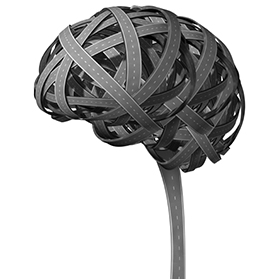- Community & News
- Neurology
- Patient Stories
- Service Line
Seizures: Know the Symptoms

While there is no specific way to prevent all seizures, Diana Brinker MD, a pediatrician at TriHealth's Group Health Western Hills, says it’s important to know what symptoms to watch for so you can monitor appropriately.
What Does a Seizure Look like?
A seizure is the physical findings or changes in the behavior that occur after an episode of abnormal electrical activity of the brain. During a seizure, muscles contract and relax repeatedly. Seizures are classified into two main categories – generalized and partial.
Generalized Seizures
There are several different types of seizures, many of which fall into the category of generalized seizures. “It involves, basically, the whole body and causes the child to lose consciousness, so they’re not aware of what’s happening around them, while the seizure is happening,” Dr. Brinker points out.
Generalized seizures affect the whole brain (specific symptoms depend on what part of the brain is involved). They can be:
- Absence seizures (petit mal) - Symptoms may include staring and brief loss of consciousness.
- Myoclonic seizures - Symptoms may include jerking or twitching of the limbs on both sides of the body.
- Tonic-clonic seizures (grand mal) - Symptoms may include loss of consciousness, shaking or jerking of the body, and loss of bladder control. The person may have an aura or an unusual feeling before the seizure starts. These seizures can last from five to 20 minutes.
Partial Seizures
Another main category of seizures is called partial seizures. These involve a part of the brain and include:
- Simple partial seizures - Symptoms may include involuntary twitching of the muscles or arms and legs; changes in vision; vertigo; and having unusual tastes or smells. The person does not lose consciousness.
- Complex partial seizures - Symptoms may be like those of partial seizures, but the person does lose awareness for a time. The persona may do things over and over, like walking in a circle or rubbing their hands, or staring into space.
Absence Seizures: Could I Miss Them?
Sometimes seizure symptoms are so subtle that you may have no idea that your child experienced one. These are known as absence seizures. “Sometimes these will present as the teacher complaining that it seems like your child is not paying attention in school, but they’re actually having these little seizures throughout the day,” Dr. Brinker says.
Related Articles
- Community & News
- Service Line
- Community & News
- Neurology
- Patient Stories
- Service Line
- Treatments
- Women's Health